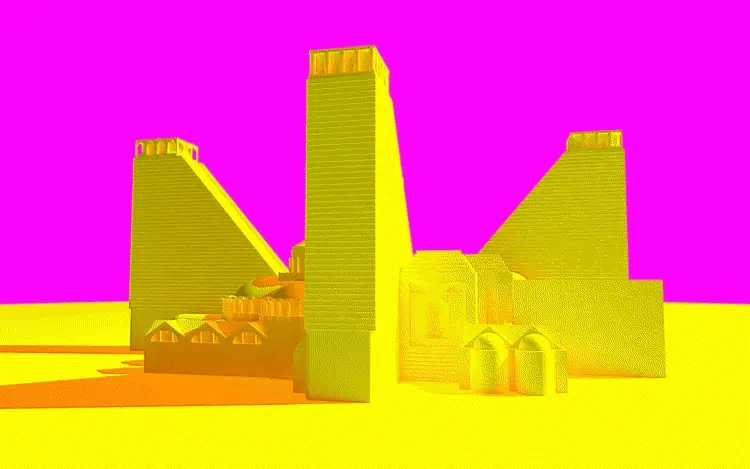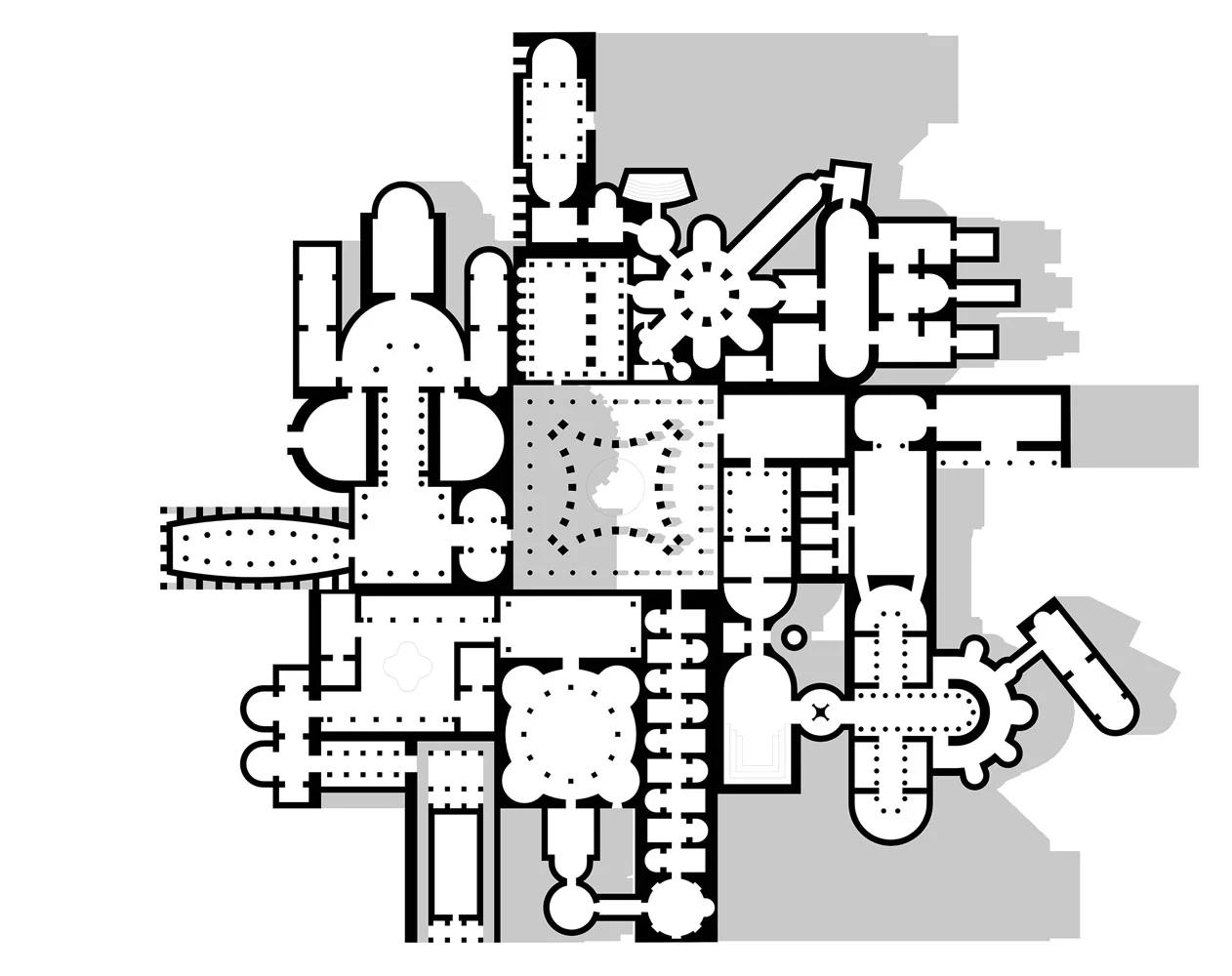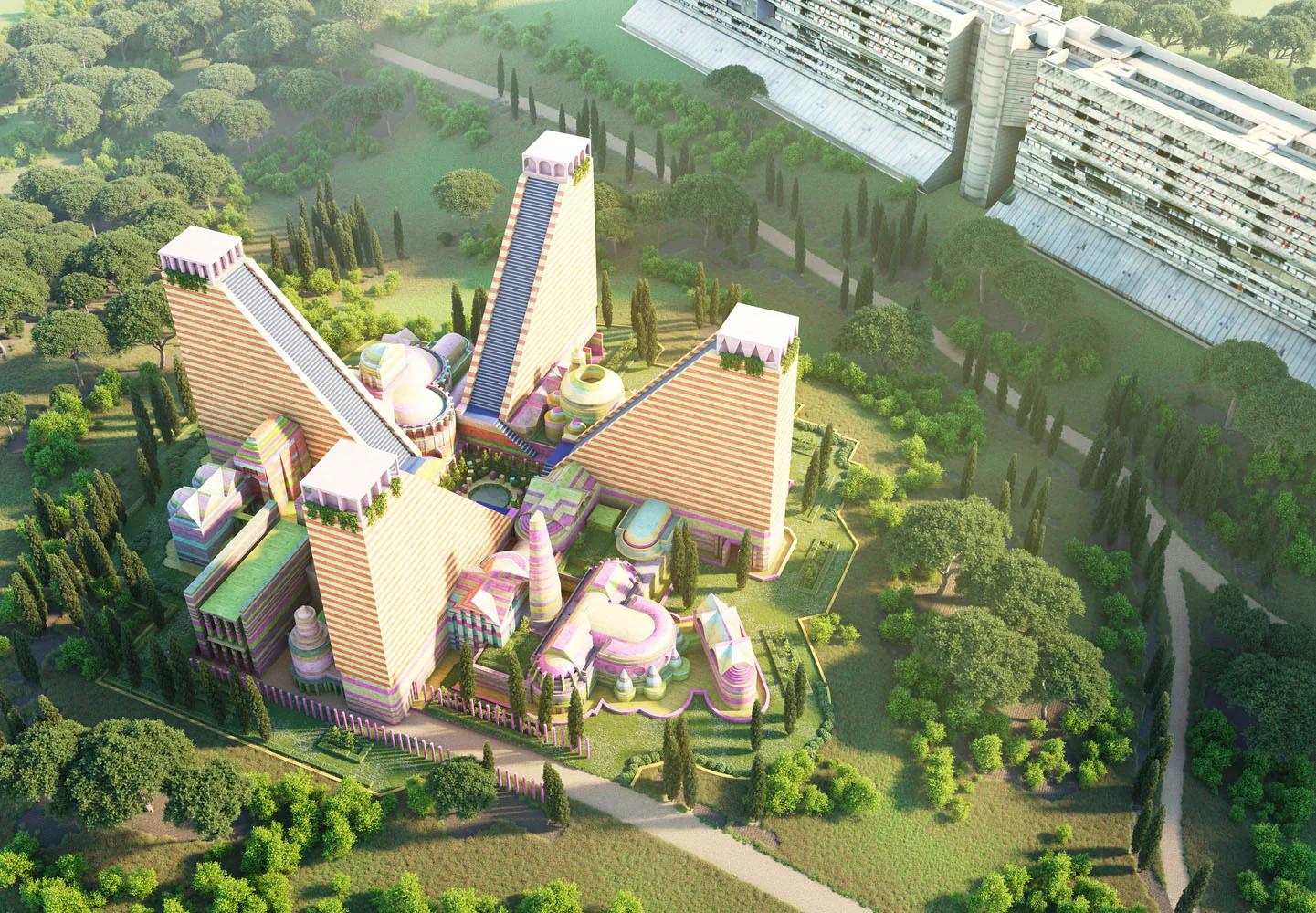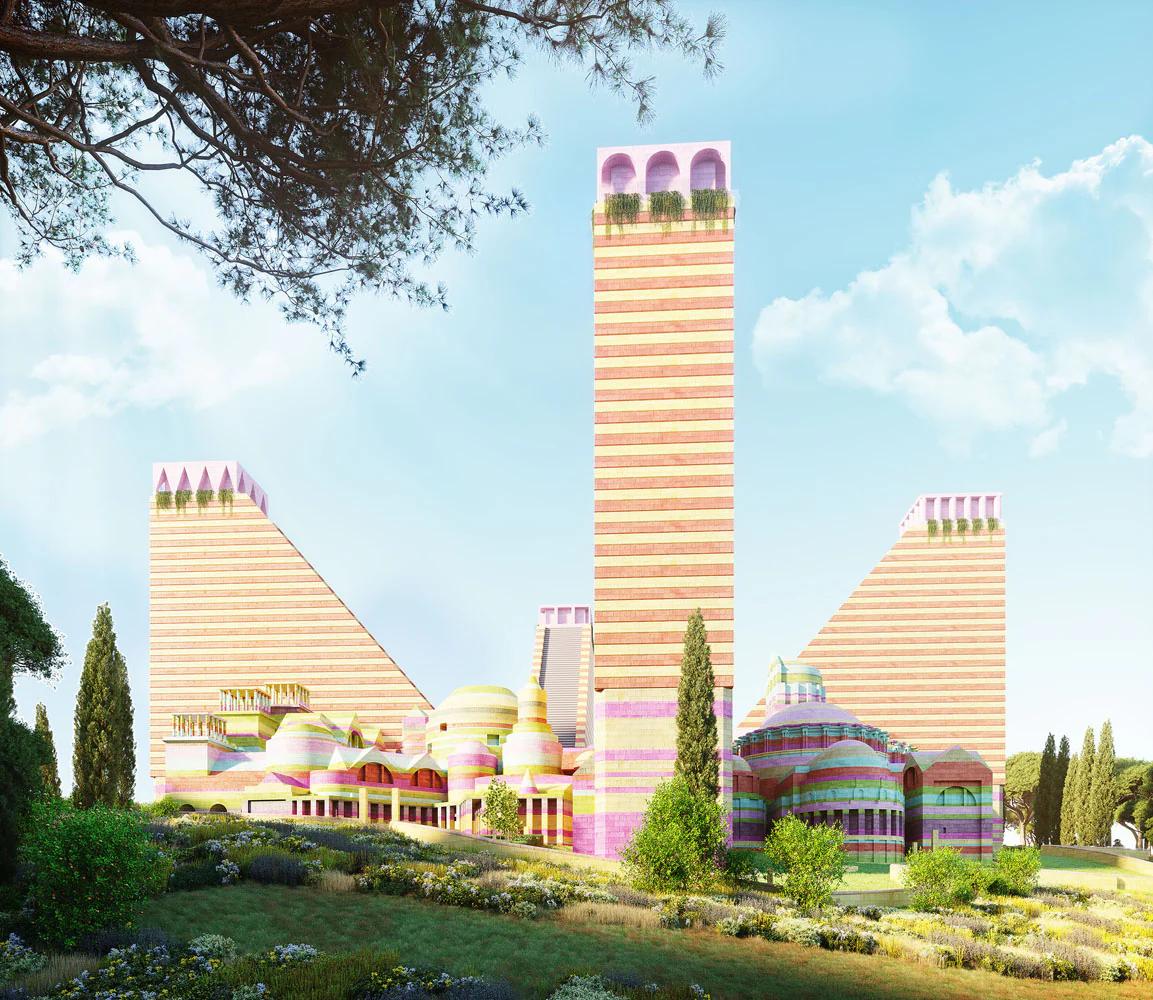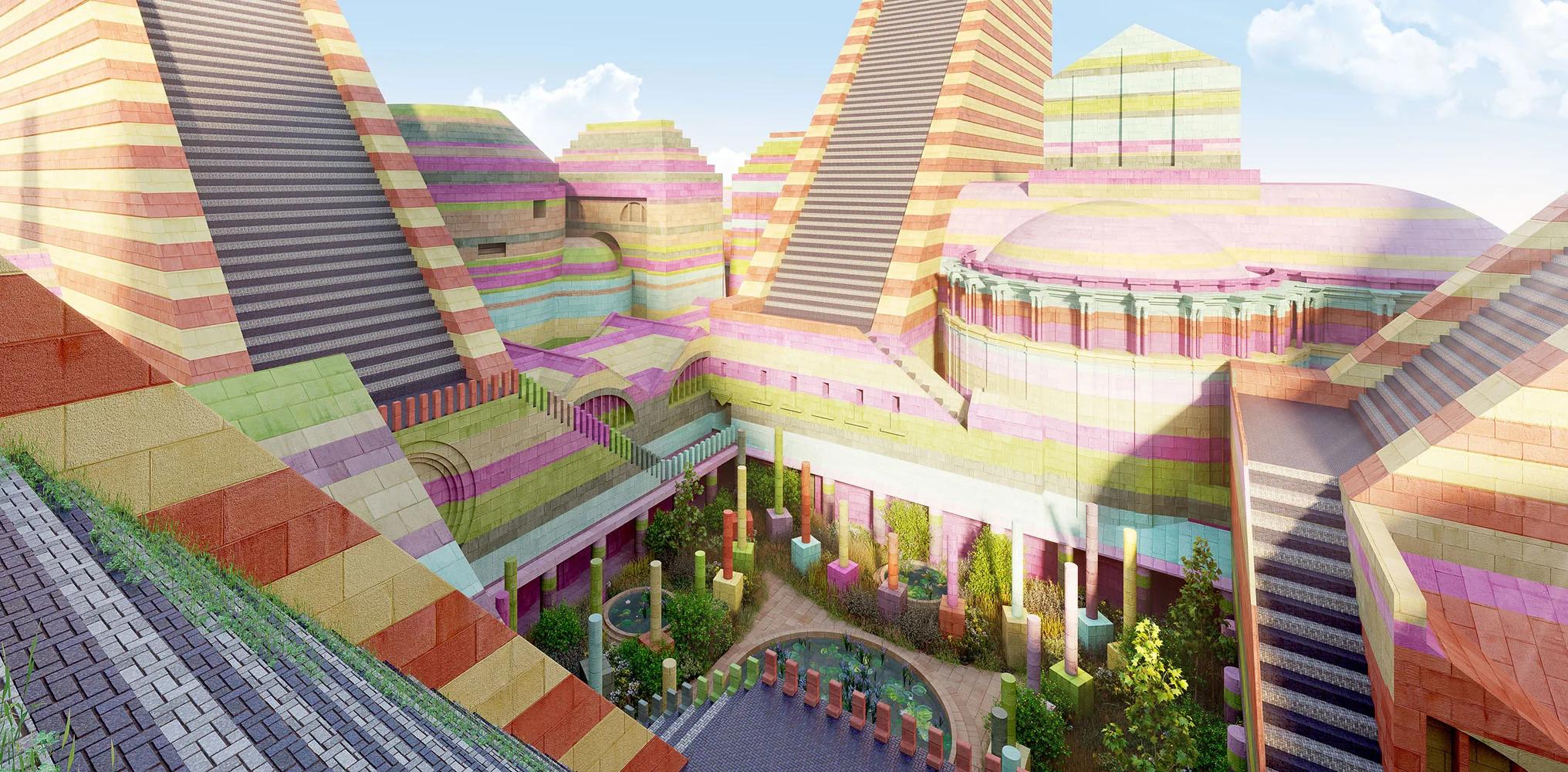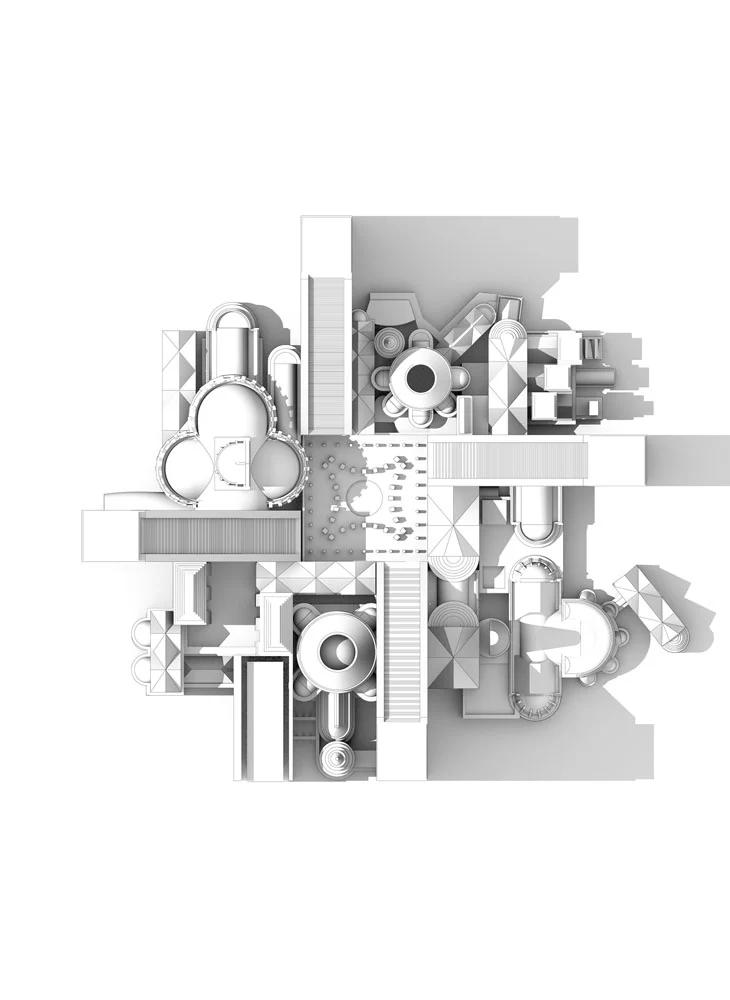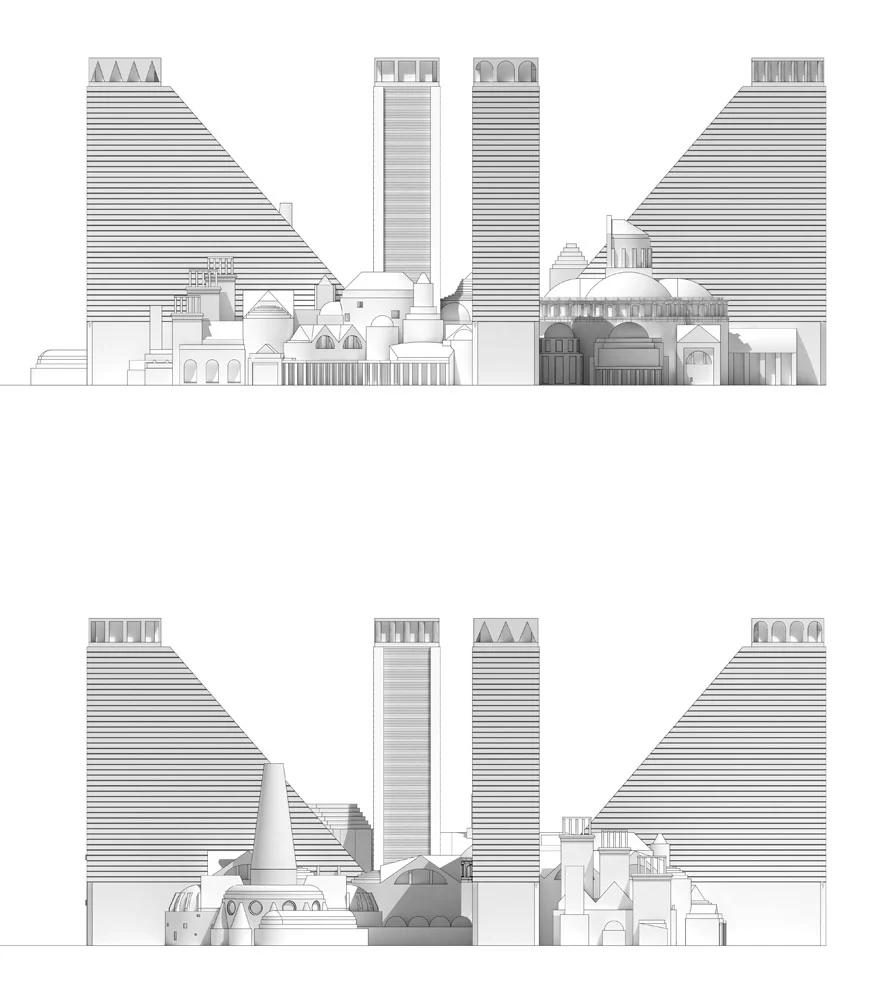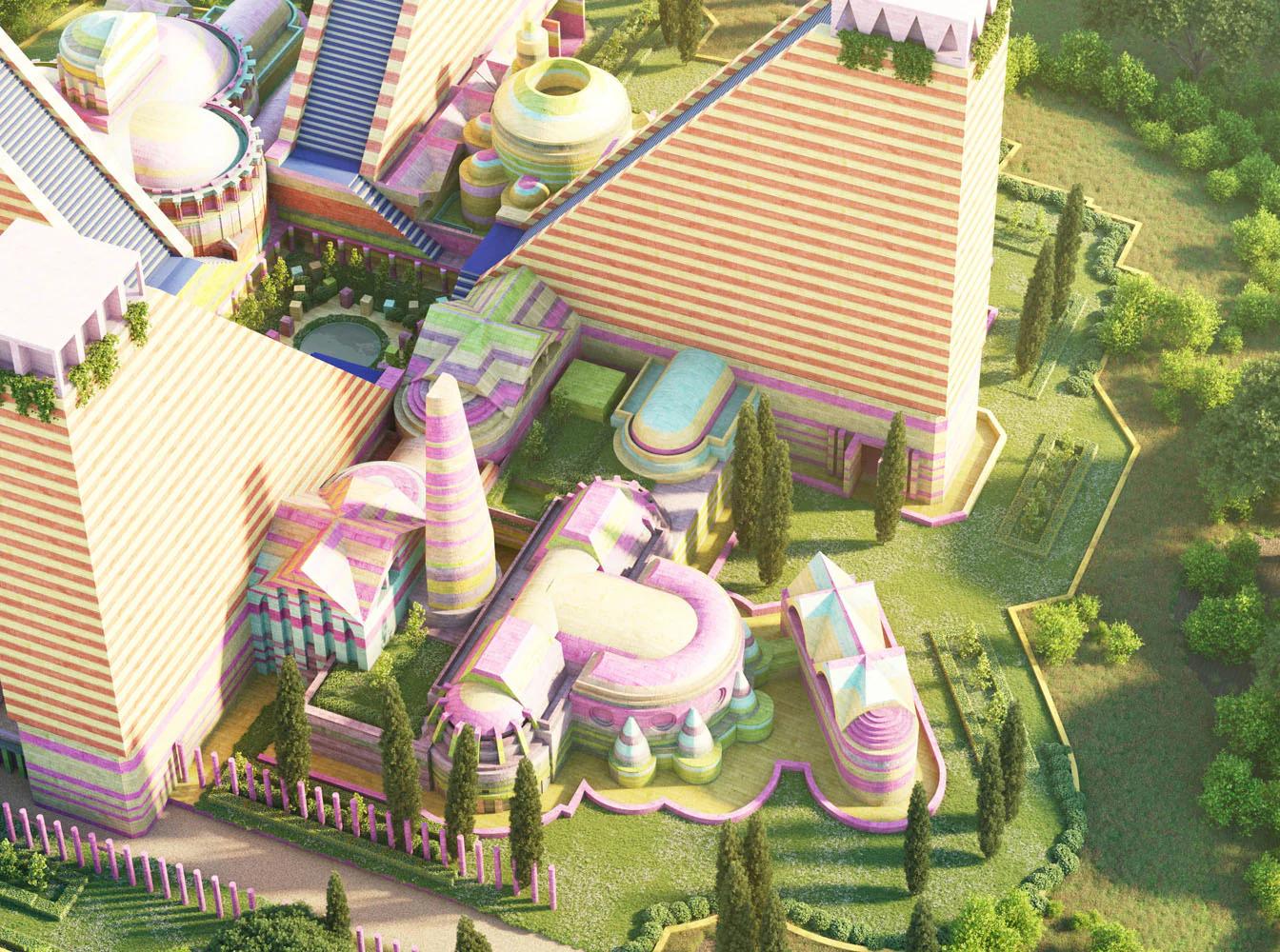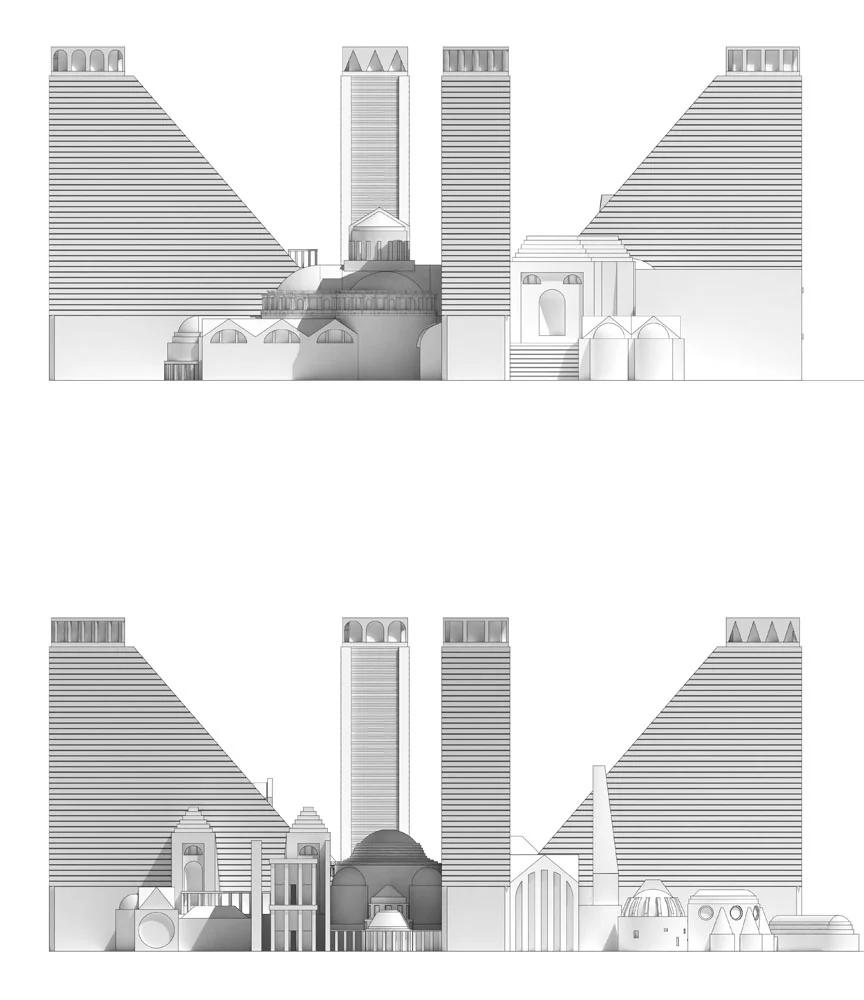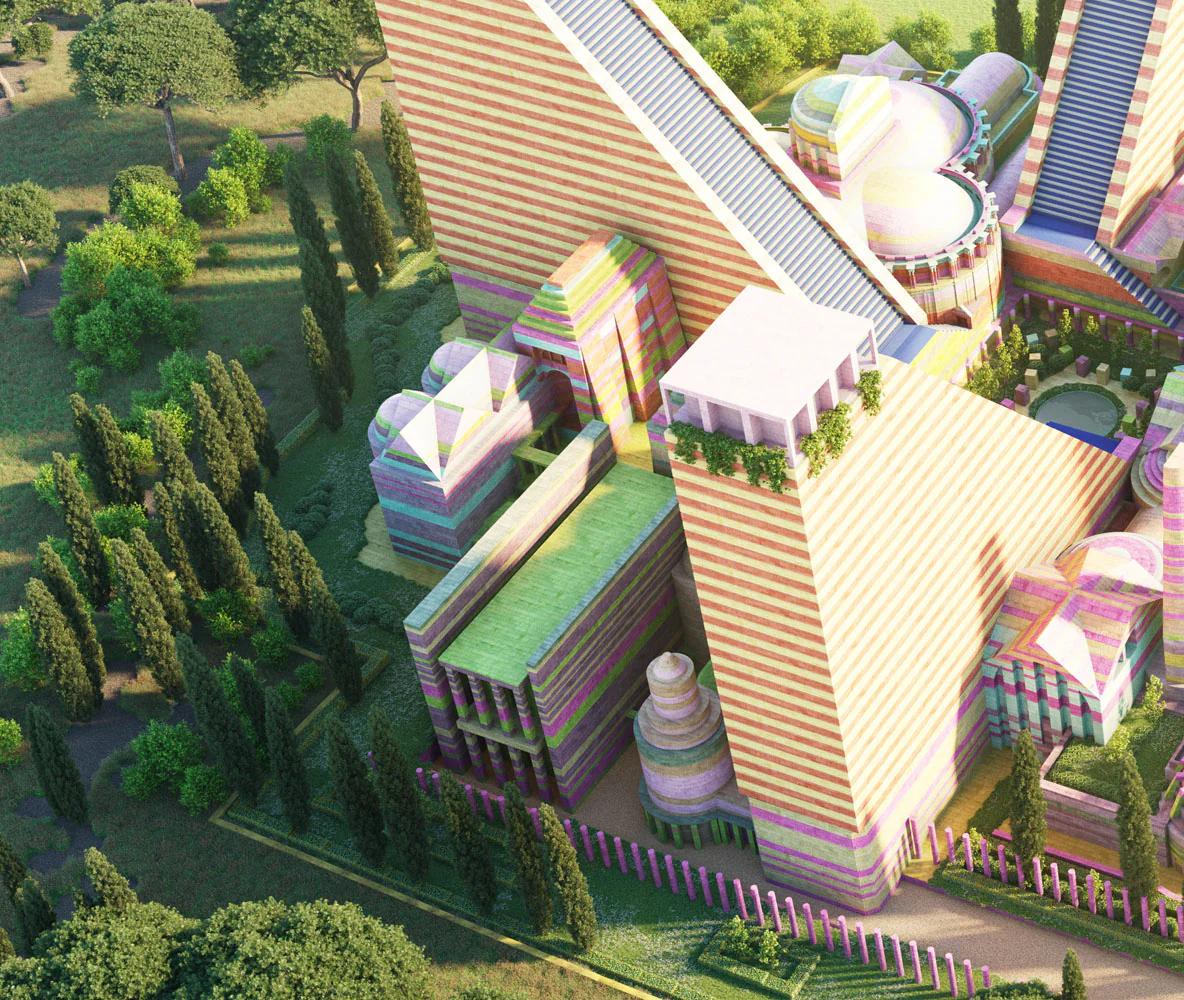In the tradition of Hadrian’s villa, the villa Giulia, and Madama, the House of the Tetrarchs is a political withdrawal into nature, fortified within the geometry of an urban ideal on the periphery of an unruly city.
Four spiralling compounds are connected at their centre at a recessed geometric grotto, and each face out towards the horizon in a different direction across the Roman campagna from four large, pavilion-topped ramps.
The three Presidents of Italy, of the Republic, the Senate, and the Chamber of Deputies, as well as the Prime Minister -the contemporary Tetrarchy- find bureaucratic respite and seclusion within the walls of each of these four dwellings, which are together grounded in a specifically formal notion of architectural continuity.
The House is located on a promontory next to Il Corviale, a kilometrelong social housing project from the 1970s, a masterpiece in concrete, a miracle of repetition, of grand vision, and ultimately, of failure.
The Corviale is relentlessly grey, and linear. The house of the Tetrarchs is eye-gougingly colourful, and endlessly involuted.
An efflorescence of monumentality and polychromous pomp, in an age of political retreat.


